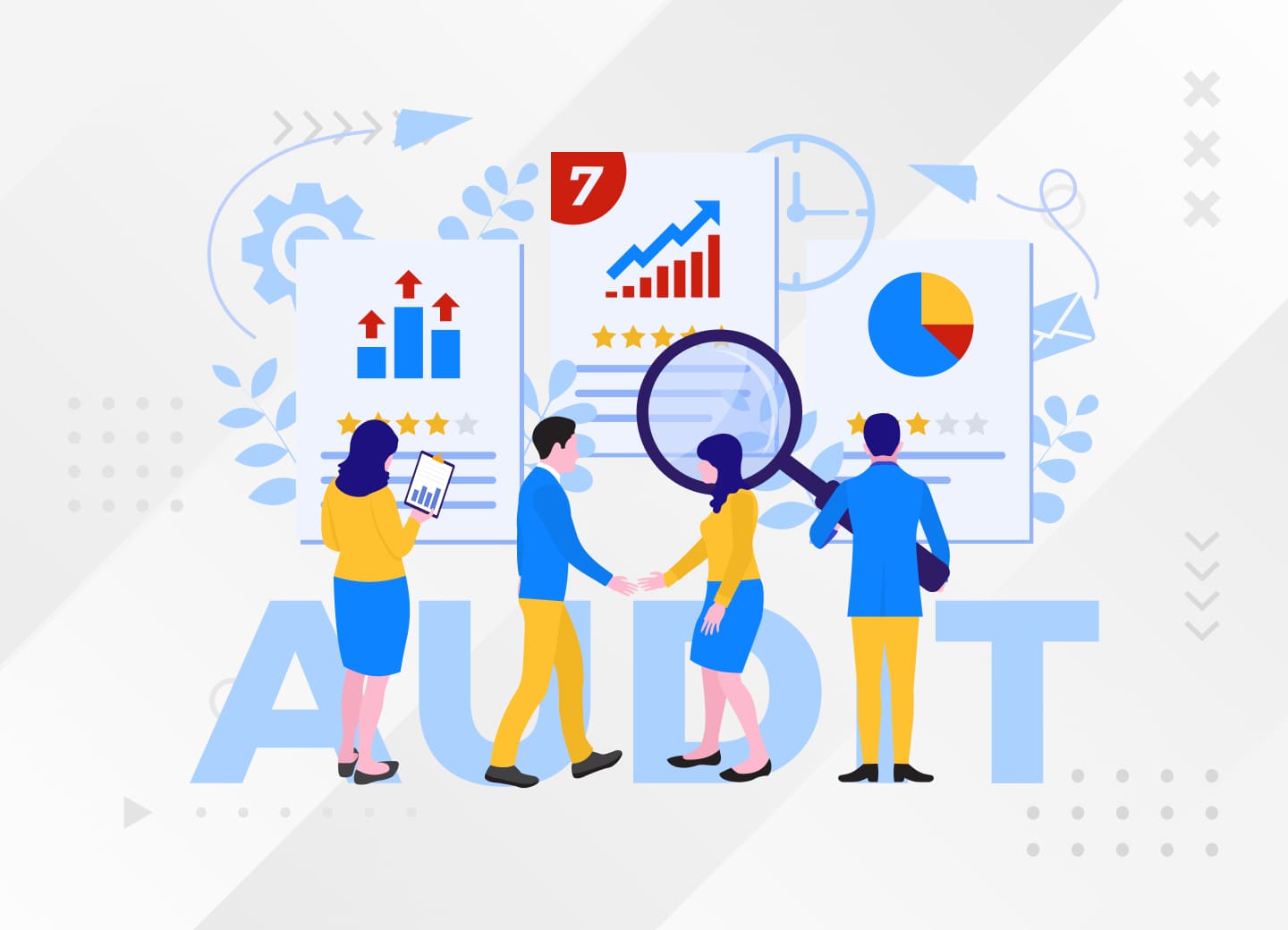The AI Revolution in Web Development: Navigating the Future (October 2025)

I. Introduction: The Dawn of an AI-Powered Web Era
The digital landscape is in constant flux, a dynamic arena where innovation is not just welcomed but demanded. For web developers, this means a perpetual race to keep pace with evolving technologies, user expectations, and market trends. If web development once felt like a meticulous craft, carefully piecing together lines of code, it has now transformed into a high-speed pursuit, akin to a Formula 1 race. The velocity of change is exhilarating, and at the heart of this acceleration lies Artificial Intelligence (AI).
AI, once a concept relegated to the realms of science fiction, has firmly established itself as a pivotal force in virtually every industry. For many, the mention of AI might still conjure images of sentient robots or overly complex algorithms understood only by a select few. This perception often leads to apprehension, with some developers fearing obsolescence or the complete automation of their roles. However, this perspective fundamentally misunderstands AI’s true potential. Rather than a replacement, AI is emerging as an indispensable co-pilot, an intelligent assistant designed to streamline workflows, enhance creativity, and unlock unprecedented efficiencies in web development.
This article aims to demystify the role of AI in web development, offering a comprehensive look at its current applications, forecasting future trends, and providing actionable insights for adaptation. We will explore how AI is already reshaping the way websites and applications are built, designed, tested, and optimized. Furthermore, we will delve into the broader societal implications, including the evolving job market and the critical need for continuous learning and ethical considerations. Our journey will reveal that AI is not an adversary to be feared, but a powerful ally to be embraced, paving the way for a more intuitive, efficient, and innovative digital future. Join us as we navigate the exciting, AI-powered evolution of web development.

II. AI’s Transformative Role in Modern Web Development (Current Landscape – October 2025)
AI is no longer a distant promise; it is an active participant in the daily lives of web developers. Its integration spans various stages of the development lifecycle, offering tangible benefits that range from accelerating code production to refining user experiences. Let’s explore the concrete ways AI is empowering web developers today.
A. Code Generation and Intelligent Assistance: Beyond Autocompletion
The act of writing code, while foundational, often involves repetitive tasks and boilerplate structures that can consume valuable time. AI has stepped in to revolutionize this aspect, moving far beyond simple autocompletion to offer context-aware suggestions and even generate entire code blocks from natural language descriptions. This leap in capability significantly boosts developer productivity, allowing them to focus on complex problem-solving and innovative features rather than mundane syntax.
In October 2025, the landscape of AI coding assistants is robust and competitive, offering a diverse array of tools tailored to various needs:
- GitHub Copilot: Still a dominant force, GitHub Copilot continues to evolve, providing highly relevant code suggestions and completions across numerous programming languages. Its deep integration with popular IDEs makes it a go-to for many developers seeking to accelerate their coding speed.
- Tabnine: This tool distinguishes itself with a strong focus on personalization and privacy. Tabnine can be trained on a team’s specific codebase, ensuring its suggestions align with existing coding styles and patterns. Its ability to run locally or in a private cloud addresses critical concerns for businesses handling proprietary code.
- Amazon CodeWhisperer: Particularly valuable for developers operating within the AWS ecosystem, CodeWhisperer offers real-time code suggestions and robust security scanning, identifying and suggesting fixes for vulnerabilities. Its reference tracking feature also aids in compliance by flagging code derived from open-source training data.
- Codeium: A rising star, Codeium provides a comprehensive suite of AI coding features, including autocomplete and an integrated AI chat, entirely free for individual use. Its support for over 70 programming languages and compatibility with numerous IDEs make it a powerful and accessible alternative.
- Windsurf: This tool excels in comprehensive workflow integration, combining Git, live preview, collaborative editing, and even unique voice/audio input capabilities. Its autonomous agent mode and strong development features across all frameworks position it as a leader in end-to-end development assistance.
- Gemini CLI: Emerging as a value champion, Gemini CLI offers completely free access under an Apache 2.0 open-source license. It boasts comprehensive quality features, including browser compatibility checks and performance optimization, alongside full multimodal capabilities and PWA support.
- Claude Code: A quality-first choice, Claude Code focuses on delivering high-quality code with extensive browser compatibility checks and performance optimization suggestions. While its premium pricing limits broader adoption, it remains a top contender for those prioritizing code excellence.
- Newer Innovators: The market also sees tools like Developer Pal for scaffolding full-stack projects from prompts, AI Developer Vault for intelligent code snippet management, The DevSpace for rapid UI building with live previews, and MutableAI for advanced code refactoring and automated documentation. These tools collectively illustrate a trend towards more specialized and integrated AI solutions that address specific pain points in the development process [1, 2].
These AI assistants act as intelligent partners, capable of understanding context, predicting needs, and generating functional code, thereby freeing developers to concentrate on architectural decisions and creative problem-solving. The time saved on routine operations is substantial, allowing for faster iteration and deployment cycles. This collaborative paradigm signifies a fundamental shift in how web development teams operate, emphasizing efficiency and innovation.
B. Revolutionizing Web Design and UI/UX: From Art to Algorithmically-Guided Creation
Web design, once a labor-intensive process requiring significant artistic flair and technical precision, is also being profoundly transformed by AI. For many developers and designers who may not possess an innate sense of aesthetic balance, AI offers a guiding hand, making the creation of visually appealing and functional interfaces more accessible and efficient. The days of struggling to combine pixels and colors into a cohesive design are rapidly becoming a relic of the past.
AI excels in several key areas of web design:
- Layout Generation: Imagine needing to quickly produce multiple design variations for a website’s homepage. AI tools can now generate diverse layout options based on specified parameters such as block arrangement, element types, and thematic requirements. These aren’t just generic templates but often unique and creative solutions that serve as excellent starting points for refinement, significantly accelerating the initial design phase.
- Color Scheme Selection: The challenge of selecting harmonious and brand-appropriate color palettes is a common hurdle. AI can analyze project themes, client preferences, and current design trends to suggest sophisticated color schemes. More impressively, some AI tools can even explain the psychological impact of certain color combinations, providing a reasoned and data-driven approach to aesthetic choices.
- Rapid Prototyping: Prototyping is crucial for visualizing user flows and testing usability. AI has simplified this process dramatically. Tools can convert rough sketches or textual descriptions into interactive prototypes within minutes. This capability allows for quick iteration and client feedback, drastically reducing the time and effort traditionally spent on creating clickable mockups. For instance, sketching a wireframe on paper and having an AI service instantly convert it into a functional prototype feels almost magical, yet it is a current reality.
Leading AI tools in this domain include:
- Uizard: An online service specializing in AI-powered design, Uizard can generate layouts from text descriptions, transform hand-drawn sketches into digital designs, suggest color palettes, and create interactive prototypes. It is an invaluable asset for rapid ideation and design iteration.
- Fronty: This tool focuses on converting visual designs (e.g., from Figma or Sketch) directly into HTML, CSS, and JavaScript code. While the generated code may require some optimization, it provides a robust foundation, saving immense development time.
- Adobe Sensei: Integrated across Adobe’s suite of products like Photoshop and Illustrator, Sensei offers a comprehensive set of AI features that automate routine tasks, enhance images, and assist in content generation, proving highly beneficial in various design workflows.
By leveraging these AI-powered design tools, web developers and designers can overcome creative blocks, streamline repetitive tasks, and focus on delivering exceptional user experiences with greater speed and precision.
C. Smarter Testing and Quality Assurance: The Vigilant AI Guardian
After code is written and designs are implemented, rigorous testing is paramount. A poorly functioning website or application can severely damage reputation, frustrate users, and lead to financial losses. Traditionally, testing has been a time-consuming and resource-intensive phase, but AI is making it smarter, faster, and more comprehensive.
AI’s contributions to quality assurance are multifaceted:
- Automated Routine Tests: AI can automate mundane and repetitive testing procedures that once required significant manual effort or complex scripting. For example, checking website appearance and functionality across hundreds of different devices, browsers, and operating systems can now be handled autonomously by AI. These systems can identify visual discrepancies, verify responsiveness, and generate detailed reports, freeing human testers for more nuanced and exploratory testing.
- Intelligent Bug Detection: Beyond simply executing tests, AI can learn from past defects and code patterns to predict potential areas of failure. It can analyze code for common vulnerabilities, suggest fixes, and even prioritize bugs based on their potential impact on user experience or system stability. This predictive capability allows teams to address issues proactively, often before they even manifest in production environments.
- Performance Optimization: AI tools can monitor application performance in real-time, identifying bottlenecks, memory leaks, and inefficient code segments. They can simulate various load conditions to stress-test applications and provide actionable insights for optimization, ensuring that websites and applications remain fast and responsive under heavy traffic.
Key AI-powered testing tools include:
- Applitools: Known for its visual AI capabilities, Applitools can automatically detect UI bugs and visual regressions across different browsers and devices, ensuring a consistent user experience.
- Testim: This AI-driven tool leverages machine learning to create, execute, and maintain end-to-end tests. It adapts to changes in the UI, reducing test maintenance overhead and improving test reliability.
- Mabl: Mabl integrates AI into the entire testing lifecycle, from test creation to execution and maintenance. It can automatically identify issues, learn from application changes, and provide insights to accelerate delivery of high-quality software.
By integrating AI into their testing strategies, web development teams can achieve higher levels of quality, reduce time-to-market, and deliver more robust and reliable digital products. The shift is towards a more intelligent, predictive, and efficient quality assurance process, where AI acts as a vigilant guardian of application integrity.
D. Content Creation and SEO Optimization: Intelligent Strategy for Visibility
In the competitive digital landscape, compelling content and robust Search Engine Optimization (SEO) are paramount for visibility and user engagement. AI has become an invaluable asset in both these domains, transforming how web developers and marketers approach content strategy and online presence. The days of manual keyword research and repetitive content generation are giving way to intelligent, data-driven approaches.
AI’s impact on content and SEO includes:
- Automated Content Generation: AI tools can now generate high-quality text, from blog posts and articles to meta descriptions and product descriptions. This goes beyond simple paraphrasing; advanced AI can create meaningful, contextually relevant content based on specified topics, keywords, and stylistic requirements. While human oversight for fact-checking, editing, and personalization remains crucial, AI provides a powerful starting point, saving countless hours of content creation.
- Data-Driven SEO Strategies: Search engine algorithms are constantly evolving, and staying ahead manually is a monumental task. AI excels at analyzing vast datasets, including millions of search queries, user behavior patterns, and competitor strategies. This analysis helps identify trending keywords, audience interests, and technical SEO issues that hinder visibility. AI can suggest optimal meta tags, internal linking strategies, and even predict the impact of algorithm changes.
Our agency, for instance, has evolved significantly in this area. While services like Jasper were valuable in 2022 for content generation, we have since moved towards leveraging five different advanced Large Language Models (LLMs) to conduct extensive research and refine our content strategies. This multi-LLM approach allows for deeper analysis, cross-validation of information, and the generation of highly nuanced and accurate content, far surpassing the capabilities of single-model solutions.
Key AI Content & SEO Tools:
- Surfer SEO: Utilizes AI to analyze top-ranking content and provide data-driven recommendations for on-page SEO optimization, including keyword density, content structure, and readability.
- Frase.io: An AI-powered content optimization tool that helps users research, write, and optimize high-quality content that ranks well in search engines.
- ChatGPT/Gemini/Claude (and other advanced LLMs): These models are not just for generating text; they are powerful tools for brainstorming ideas, summarizing complex information, generating multiple content variations, and assisting with keyword research and topic clustering. Their ability to process and synthesize vast amounts of information makes them indispensable for modern content creation.
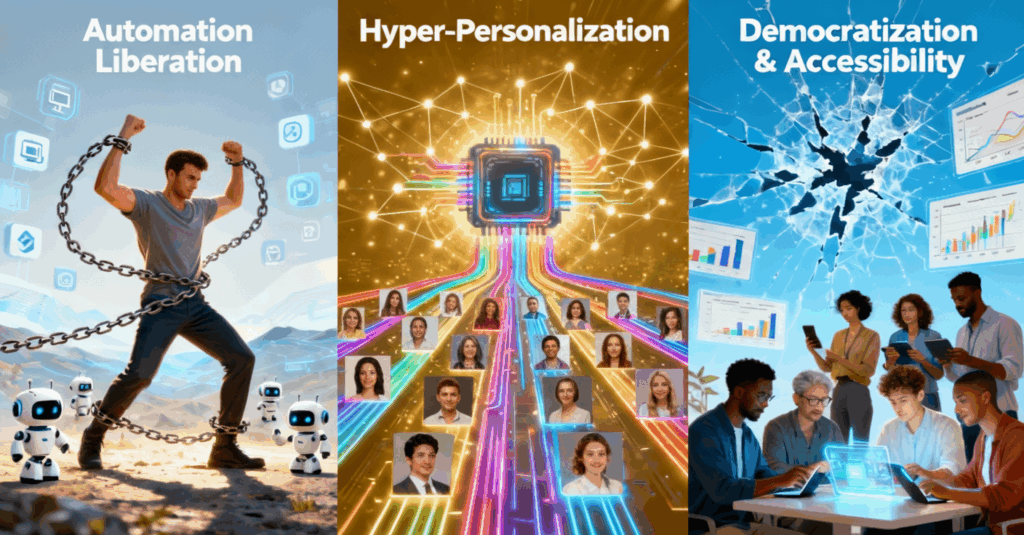
III. How AI is Reshaping the Web Development Process: A Paradigm Shift
Beyond individual tools and specific tasks, AI is fundamentally altering the very fabric of the web development process. It’s not just about doing things faster; it’s about doing them differently, more intelligently, and with a greater focus on the end-user. This section delves into how AI is driving a profound shift in methodology, making development more automated, personalized, and accessible.
A. Automation of Everything: Less Routine, More Creativity
If you’ve ever spent hours on repetitive coding, debugging, or deploying, you know the drudgery that can accompany web development. The good news? AI is systematically dismantling this routine. One of AI’s most profound impacts is its capacity for hyper-automation, taking over tasks that once consumed countless developer hours. This isn’t just about efficiency; it’s about liberating human creativity and allowing developers to focus on the truly challenging and innovative aspects of their work [6].
Consider the sheer volume of routine tasks that AI now handles:
- Automated Programming: As discussed, AI assistants like GitHub Copilot and Windsurf don’t just complete lines of code; they can generate entire functions, components, and even boilerplate structures from natural language prompts. This means developers spend less time on syntax and more on architectural design, complex logic, and unique feature implementation.
- Automated Testing: The days of manually clicking through every page and testing every form are rapidly fading. AI-powered testing bots can autonomously execute comprehensive test suites, identify visual regressions, check responsiveness across myriad devices and browsers, and even predict potential failure points based on code patterns. This significantly reduces testing cycles and enhances overall software quality.
- Automated Design Creation: AI tools like Uizard can transform textual descriptions or even hand-drawn sketches into digital layouts, suggest harmonious color palettes, and generate interactive prototypes. This accelerates the initial design phase, allowing designers to iterate rapidly and focus on refining user experience rather than pixel-perfect manual adjustments.
- Automated Content Creation: AI services are now adept at generating high-quality text for websites, including blog posts, product descriptions, meta tags, and even marketing copy. While human oversight for accuracy and brand voice remains essential, AI provides a powerful engine for content generation, freeing content managers and marketers to focus on strategy and creative campaigns.
- Automated Deployment and Maintenance: AI is increasingly integrated into DevOps pipelines, automating tasks such as server configuration, deployment processes, infrastructure monitoring, and even proactive maintenance. Agentic AI systems, for example, can autonomously detect anomalies, diagnose issues, and initiate corrective actions, significantly streamlining operations and enhancing system reliability [6].
The benefits of this widespread automation for developers are transformative:
- More Time for Creativity: Freed from the shackles of routine, developers can channel their energy into innovative solutions, experimenting with cutting-edge technologies, and crafting truly unique web products that stand out in a crowded digital landscape.
- Opportunities for Continuous Learning: The time saved translates directly into more opportunities for professional development. Developers can delve into new programming languages, frameworks, and AI methodologies, staying at the forefront of the industry and enhancing their value.
- Reduced Fatigue and Burnout: The monotonous nature of repetitive tasks is a significant contributor to developer burnout. By offloading these to AI, the work becomes more engaging, stimulating, and ultimately, more sustainable.
- Resource Liberation for Innovation: For businesses, automating routine processes means reallocating valuable human and financial resources towards research and development, new product creation, and strategic growth, fostering a culture of continuous innovation.
This shift towards comprehensive automation is not just an incremental improvement; it’s a fundamental redefinition of the developer’s role, moving from a manual laborer to a strategic orchestrator of intelligent systems.
B. Hyper-Personalization for Every User: Websites Become Intelligent Companions
Beyond automation, AI is ushering in an era of unprecedented hyper-personalization, transforming websites from static digital brochures into dynamic, intelligent companions tailored to each individual user. The goal is simple yet profound: to make every user feel seen, understood, and served with content and experiences that are uniquely relevant to them [7].
Historically, personalization was a complex, rule-based endeavor, often requiring extensive data collection and manual configuration. With AI, this process has become dramatically more sophisticated and accessible, driven by several key mechanisms:
- Advanced User Data Analysis: AI excels at processing vast, complex datasets that include user demographics, browsing behavior, purchase history, content consumption patterns, and even real-time interactions. Crucially, AI can uncover subtle correlations and hidden patterns within this data that human analysts might miss. For example, an AI might identify that users from a specific geographic region, viewing certain product categories at a particular time of day, are highly likely to convert. This granular insight fuels highly effective personalization strategies.
- Contextual Content Suggestion: Based on this deep understanding of user preferences and real-time context, AI can proactively suggest content, products, or services that are most likely to resonate. This goes beyond simple recommendations; it’s about anticipating needs. If a user frequently researches specific technologies, the AI might highlight related articles, tutorials, or even job openings, creating a highly relevant and sticky experience. E-commerce sites, for instance, leverage AI to power their “Recommended for You” sections, cross-selling, and up-selling based on intricate behavioral patterns [7].
- Adaptive Interface Design: Personalization isn’t just about what content is displayed, but how the interface itself adapts. AI can dynamically adjust UI elements, layouts, color schemes, navigation pathways, and even font sizes based on individual user preferences, device, location, and even inferred emotional state. Imagine a website that simplifies its navigation for a first-time visitor, or highlights specific call-to-actions for a returning customer based on their past interactions. This creates a truly intuitive and frictionless user experience, making the website feel like it was custom-built for each visitor [7].
The benefits of this hyper-personalization are profound for both businesses and users:
- Enhanced User Experience: Users encounter content and interfaces that are highly relevant and intuitive, leading to increased satisfaction and a sense of being understood. This fosters loyalty and encourages repeat visits.
- Increased User Engagement: When a website consistently delivers value tailored to individual interests, users spend more time on the site, explore more pages, and interact more deeply with the content. This strengthens their connection with the brand.
- Boosted Business Metrics: For e-commerce and online businesses, hyper-personalization directly translates to higher conversion rates, increased sales, and improved customer lifetime value. Personalized recommendations and offers are far more effective than generic ones, driving tangible economic benefits.
Examples of AI-powered personalization are ubiquitous: from the product recommendations on Amazon and Netflix, to the curated news feeds on social media platforms like Facebook and Instagram, and the tailored email campaigns from countless online retailers. These systems continuously learn and adapt, ensuring that the digital experience evolves with the user, making websites truly intelligent companions.
C. Accelerating Development and Enhancing Accessibility: Lowering the Barrier to Entry
For a long time, web development was perceived as an exclusive domain, a closed club for those with deep technical knowledge and years of coding experience. The barrier to entry was high, requiring extensive learning in programming languages, frameworks, and complex technologies. This often meant that individuals with brilliant ideas but limited technical skills were left out, forced to either hire expensive specialists or abandon their digital aspirations.
However, AI is dramatically changing this narrative, making web development faster, easier, and significantly more accessible to a much broader audience. It’s democratizing creation, empowering individuals and small businesses to build their online presence without needing to become coding gurus [7].
Key ways AI is simplifying and accelerating development:
- Reduced Website Creation Time: The automation of various development stages—from coding and testing to design and content generation—has drastically cut down the time required to launch a website. What once took weeks or months can now be achieved in days or even hours. This agility is particularly beneficial for small businesses and startups that need to establish a rapid online presence, as well as for individuals looking to create personal or hobby-related websites quickly.
- Lowered Entry Barrier into the Profession: AI assistants for programming, design, and testing are making the web developer’s role less about intricate technical memorization and more about understanding core principles and problem-solving. Beginners can now grasp the fundamentals of web development more easily, as AI handles much of the routine and technical minutiae. This allows newcomers to focus on the broader architecture and user experience, significantly lowering the barrier to entry for aspiring developers.
- No-Code/Low-Code Platforms with AI: The rise of no-code and low-code platforms, heavily augmented by AI, is a game-changer. These platforms enable users to create sophisticated websites and applications with minimal to no traditional coding. They often feature intuitive visual interfaces, drag-and-drop builders, and AI-powered generators for code and design elements. AI can assist in everything from generating initial site structures based on a few keywords to optimizing database interactions. This empowers even non-technical users to build functional and aesthetically pleasing websites, transforming abstract ideas into tangible digital products [8, 9].
This newfound accessibility opens up a wealth of opportunities for diverse groups:
- Small Businesses & Startups: Can quickly and affordably launch professional websites, enabling them to compete effectively in the digital marketplace.
- Individual Entrepreneurs & Creatives: Can easily build portfolios, e-commerce stores, or personal blogs to showcase their work and connect with audiences.
- Non-Technical Users: Are empowered to bring their digital ideas to life, fostering a new wave of innovation and creativity from unexpected sources.
In essence, AI is transforming web development from an exclusive craft into an inclusive endeavor, fostering innovation and enabling a broader demographic to participate in shaping the digital world. This shift not only accelerates development cycles but also enriches the web with a wider array of voices and ideas.
E. The Symbiotic Relationship: AI as a Co-Pilot for Developers
The most significant shift AI brings to web development is the evolution of the developer’s role from a solitary coder to an orchestrator and collaborator with intelligent systems. AI is not merely a tool; it’s a co-pilot, a force multiplier that augments human capabilities and allows for a more strategic, creative, and efficient approach to building the web.
This symbiotic relationship manifests in several critical ways:
- Augmented Creativity: By automating mundane tasks, AI frees developers to channel their cognitive energy into innovative solutions, complex problem-solving, and the conceptualization of novel features. It allows for more experimentation with cutting-edge technologies and the creation of truly unique web products that stand out.
- Enhanced Efficiency: AI accelerates every stage of the development lifecycle, from initial design and coding to testing and deployment. This dramatic increase in efficiency means faster iteration cycles, quicker time-to-market, and the ability to deliver more robust and feature-rich applications in less time.
- Democratized Development: AI-powered no-code/low-code platforms and intelligent assistants lower the barrier to entry for web development. This democratizes creation, enabling individuals and small businesses with limited technical expertise to build sophisticated online presences, fostering a more diverse and innovative digital ecosystem.
- Continuous Learning and Adaptation: The rapid evolution of AI necessitates a commitment to continuous learning for developers. Staying abreast of new AI tools, methodologies, and ethical considerations becomes paramount, transforming developers into lifelong learners and adaptive innovators.
This collaborative paradigm underscores a fundamental truth: the future of web development is not about humans versus machines, but about humans and machines working together. AI handles the computational heavy lifting and repetitive tasks, while human developers provide the vision, creativity, critical thinking, and ethical oversight. This partnership promises a future where web development is not only more productive but also more engaging, innovative, and ultimately, more human-centric.
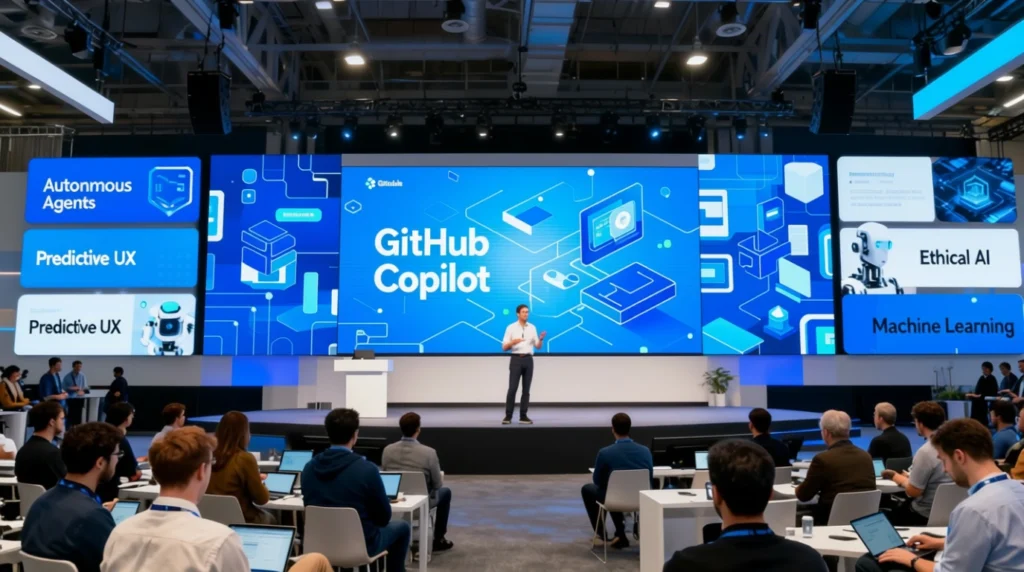
IV. The Future Horizon: Beyond 2025
As we stand in October 2025, the trajectory of AI in web development points towards even more profound transformations. The current advancements are merely precursors to a future where AI becomes an even more integral, and often invisible, partner in the creation of digital experiences. We foresee several key areas of evolution:
A. Hyper-Automation and Autonomous Agents
While current AI tools automate many tasks, the future promises an era of true hyper-automation driven by Agentic AI systems. These are not just tools that execute commands; they are intelligent entities capable of autonomously planning, acting, and reasoning to achieve complex development outcomes [6]. Imagine an AI agent that, given a high-level objective like “create a new e-commerce feature for personalized recommendations,” could:
- Autonomously plan the entire development lifecycle, from database schema modifications to front-end UI components.
- Generate and test the necessary code, potentially across multiple programming languages and frameworks.
- Deploy the feature to a staging environment.
- Monitor its performance and user feedback.
- Adapt and refine the feature based on real-time data, all with minimal human intervention.
This level of autonomy will revolutionize DevOps, leading to continuous delivery pipelines that are not just automated but self-optimizing and self-healing. The role of the human developer will shift further towards high-level orchestration, strategic oversight, and defining the creative vision, rather than granular execution.
B. Hyper-Personalization and Predictive UX
The personalization we see today, while advanced, will evolve into predictive user experiences (UX). AI will move beyond reacting to user behavior to proactively anticipating needs and preferences, often before the user is even consciously aware of them. This will involve:
- Real-time Adaptive Interfaces: Interfaces that don’t just change based on user settings, but dynamically adjust their layout, content, and interaction patterns based on a user’s current emotional state (inferred from subtle cues like browsing speed, scroll patterns, or even biometric data via wearables), cognitive load, and immediate context (location, time of day, current task).
- Seamless, Invisible UX: The AI will work so seamlessly in the background that the personalization becomes almost invisible, creating an experience that feels intuitively right, as if the website is reading the user’s mind. This could manifest as content that appears exactly when and where it’s most relevant, or navigation paths that effortlessly guide the user to their desired outcome.
This future will demand an even deeper understanding of user psychology and a meticulous approach to data privacy, ensuring that predictive capabilities enhance, rather than intrude upon, the user experience.
C. Novel Interaction Paradigms
The way users interact with the web is also poised for a radical transformation, moving beyond traditional mouse-and-keyboard or touch interfaces. AI will be the engine behind these new paradigms:
- Voice and Gesture Control: Advanced AI will enable more natural and nuanced voice commands and gesture recognition, allowing users to navigate and interact with websites and applications hands-free or with subtle movements. This will be particularly impactful for accessibility and for integrating web experiences into smart environments.
- Immersive Web Experiences (AR/VR): AI will power increasingly sophisticated augmented reality (AR) and virtual reality (VR) web environments. Imagine browsing an e-commerce store where you can virtually try on clothes in your living room, or collaborating on a web-based project in a shared virtual workspace. AI will render these immersive environments, manage complex interactions, and personalize the virtual experience.
- Thought-Controlled Interfaces: While still nascent, brain-computer interfaces (BCIs) represent the ultimate frontier. AI will be crucial in interpreting neural signals to allow users to interact with web content purely through thought, offering unparalleled accessibility and a truly seamless digital experience.
D. Ethical AI and Responsible Development
As AI becomes more powerful and pervasive in web development, the importance of ethical AI and responsible development practices will grow exponentially. The focus will shift to proactively addressing potential pitfalls:
- Bias Detection and Mitigation: AI models, trained on vast datasets, can inadvertently perpetuate and amplify societal biases. Future web development will require robust AI systems specifically designed to detect and mitigate algorithmic bias in everything from content recommendations to design choices, ensuring fairness and inclusivity.
- Transparency, Fairness, and Accountability: Developers and organizations will face increasing scrutiny to ensure their AI systems are transparent in their operations, fair in their outcomes, and accountable for their decisions. This will involve clear explanations of how AI influences user experiences and robust mechanisms for redress when errors or biases occur.
- Privacy Concerns and Data Governance: With hyper-personalization relying on extensive user data, stringent privacy protocols and advanced data governance frameworks will be paramount. AI systems will need to be designed with privacy-by-design principles, offering users greater control over their data and ensuring compliance with evolving global regulations.
Navigating these ethical considerations will be crucial for building trust and ensuring that the AI-powered web serves humanity positively and equitably.
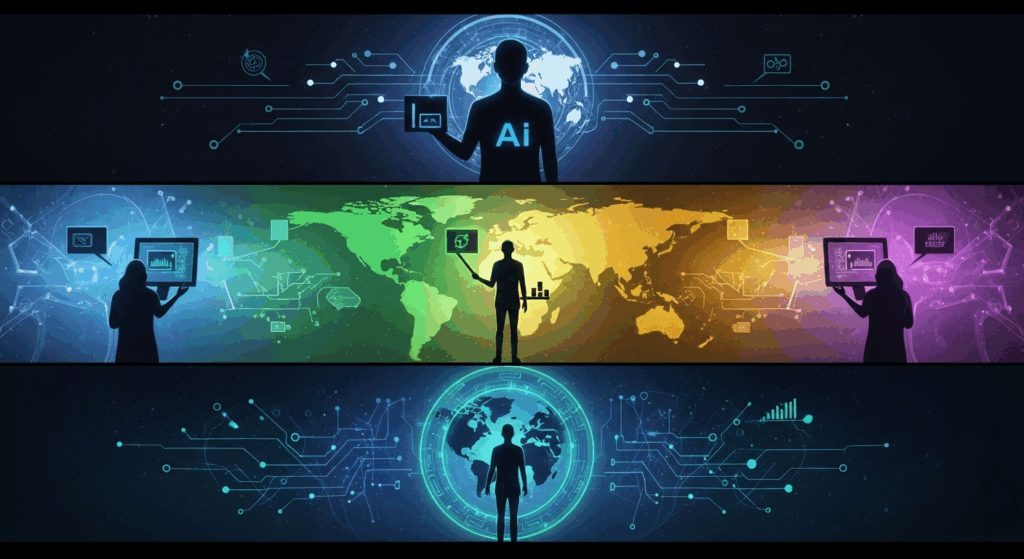
V. The Human Element: Navigating AI’s Impact on the Workforce (October 2025)
The integration of AI into web development, while offering immense opportunities, also brings significant questions about its impact on the human workforce. As of October 2025, the narrative around AI and jobs is complex, moving beyond simple fears of mass unemployment to a more nuanced understanding of job transformation and creation. The consensus is that AI will not eliminate jobs wholesale, but rather redefine roles and demand new skill sets.
A. Global Job Displacement Trends: A Regional Overview
The impact of AI on employment is not uniform across the globe; it varies significantly by region, industry, and economic structure. While some sectors face disruption, others are seeing new opportunities emerge. Here’s a snapshot of trends in key regions:
- United States: The U.S. labor market is experiencing a significant reshuffling. While AI is automating routine tasks in areas like data entry, customer service, and even some coding functions, it is also driving demand for AI specialists, data scientists, prompt engineers, and roles focused on human-AI collaboration. Studies indicate that while up to 30% of tasks across various jobs could be automated by AI, the net effect on employment is more about augmentation and transformation than outright loss, with a projected 15% increase in AI-related jobs by 2030 [3, 4]. Retraining and upskilling initiatives are critical to bridge the evolving skill gap.
- Canada: Canada’s workforce is undergoing a similar transition. The tech sector, a major employer, is actively integrating AI, leading to increased productivity but also a shift in required skills. Government reports highlight the need for robust educational programs and support for workers transitioning from roles susceptible to automation. While specific job loss figures are still emerging, the focus is on proactive adaptation, with an emphasis on digital literacy and AI proficiency across all industries [5].
- Europe: The European Union, with its diverse economies, faces varied impacts. Countries with a strong manufacturing base might see different effects than those focused on services. EU policies are increasingly centered on fostering AI innovation while also protecting workers through social safety nets and extensive reskilling programs. The European Centre for the Development of Vocational Training (Cedefop) projects that while AI will displace some jobs, it will also create new ones, particularly in areas requiring advanced digital skills and human-centric AI design. The challenge lies in managing this transition equitably across member states [10].
- Australia: Australia is witnessing AI integration across its mining, finance, and healthcare sectors. The initial impact has been on roles involving repetitive data processing and administrative tasks. However, there’s a strong push for workforce adaptation, with government and industry collaborating on initiatives to train workers in AI-adjacent skills. The Australian Bureau of Statistics indicates a growing demand for roles that involve AI oversight, data interpretation, and complex problem-solving, suggesting a net positive impact on skilled employment in the long run, provided adequate training is available [10].
Overall, the global trend is not one of widespread job destruction, but rather a profound restructuring of the labor market. The key to navigating this era lies in understanding the evolving demands and proactively acquiring new skills.
B. The Evolving Role of the Web Developer: From Coder to Orchestrator
For web developers, the AI revolution means a significant evolution of their role. The days of being primarily a manual coder are giving way to a more strategic, multifaceted position. Developers are transforming into orchestrators of intelligent systems.
- Architectural Design and Problem-Solving: With AI handling much of the code generation, developers will increasingly focus on designing robust architectures, defining complex system logic, and solving higher-level business problems. Their expertise will be in understanding how to best leverage AI tools to achieve project goals.
- Prompt Engineering and AI Model Management: The ability to effectively communicate with AI models—known as prompt engineering—is becoming a critical skill. Developers will need to craft precise prompts, manage AI outputs, and fine-tune models to ensure they align with project requirements and ethical guidelines.
- Critical Thinking and Creativity: AI excels at execution, but human creativity, critical thinking, and innovative problem-solving remain irreplaceable. Developers will be tasked with conceptualizing novel solutions, integrating diverse AI components, and pushing the boundaries of what’s possible.
- Soft Skills: Collaboration, Communication, Ethical Reasoning: As AI automates technical tasks, the importance of human-centric skills will grow. Collaborating effectively with cross-functional teams, communicating complex technical concepts clearly, and navigating the ethical implications of AI development will be paramount.
C. Strategic Adaptation: Thriving in an AI-Powered World
To thrive in this evolving landscape, web developers must embrace continuous learning and strategic adaptation:
- Continuous Learning and Upskilling: Staying current with the latest AI tools, frameworks, and methodologies is no longer optional. Developers must actively seek out courses, certifications, and practical projects that build their AI proficiency.
- Specialization in AI-Adjacent Fields: Opportunities abound in areas like prompt engineering, AI ethics, data science for web analytics, and machine learning operations (MLOps) tailored for web applications. Specializing in these niches can create significant career advantages.
- Fostering Human-AI Collaboration: Learning to work with AI, rather than against it, is key. This involves understanding AI’s strengths and limitations, and developing workflows that seamlessly integrate human oversight and creative input with AI-driven efficiency.
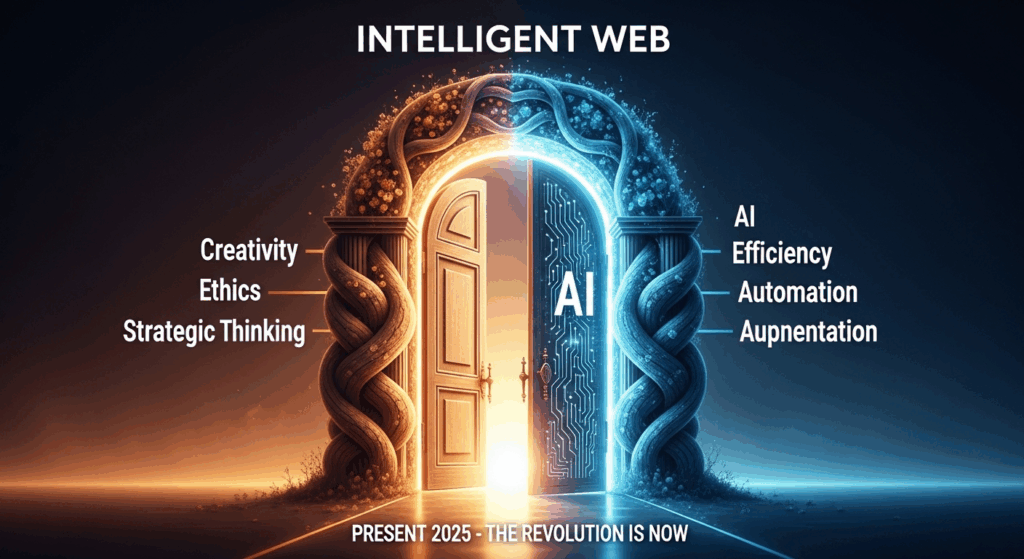
VI. Conclusion: Embracing the Intelligent Web
The AI revolution in web development is not a distant future; it is our present. From automating mundane tasks and hyper-personalizing user experiences to democratizing access to creation, AI is fundamentally reshaping how we build and interact with the web. It is a powerful co-pilot, enhancing human capabilities and opening doors to unprecedented innovation.
While concerns about job displacement are valid, the overarching trend is one of transformation, demanding a shift in skills and mindset. Web developers are evolving from mere coders to strategic orchestrators, focusing on architectural design, ethical considerations, and creative problem-solving, augmented by intelligent systems.
To navigate this exciting era, continuous learning, strategic adaptation, and a commitment to responsible AI development are paramount. The future of web development is collaborative, intelligent, and brimming with potential. By embracing AI as an ally, we can collectively build a digital world that is more efficient, personalized, and accessible for everyone. The intelligent web awaits its architects.
VII. References
- LogRocket Blog – AI Dev Tool Power Rankings (Oct 2025)
https://blog.logrocket.com/ai-dev-tool-power-rankings-oct-2025/ - The AI Library – Best 50 AI Tools for Developers (Oct 2025)
https://www.theailibrary.co/blog/the-best-50-ai-tools-for-developers-2025 - Politico – AI Job Cuts (Oct 2025)
https://www.politico.com/news/2025/10/14/ai-jobcuts-problems-trump-economy-00183547 - Yale Budget Lab – Impact of AI on Labor Market (Oct 2025)
https://budgetlab.yale.edu/research/evaluating-impact-ai-labor-market-current-stateaffairs - FSC-CCF – Canada’s Workforce in Transition (Sept 2025)
https://fsc-ccf.ca/wp-content/uploads/2025/09/canadas-workforce-in-transition_sept2025.pdf - Vuram – 10 Game-changing AI and Hyperautomation Trends for 2025
https://www.vuram.com/article/10-game-changing-ai-and-hyperautomation-trends-2025/ - Sparkout Tech – AI for Web Development in 2025
https://www.sparkouttech.com/best-ai-web-development-2025/ - Zapier – Best No-Code App Builders in 2025
https://zapier.com/blog/best-no-code-app-builder/ - Appsmith – Top Low-Code AI Platforms 2025
https://www.appsmith.com/blog/top-low-code-ai-platforms-2025 - European Centre for the Development of Vocational Training (Cedefop) – AI and the Future of Work in Europe



